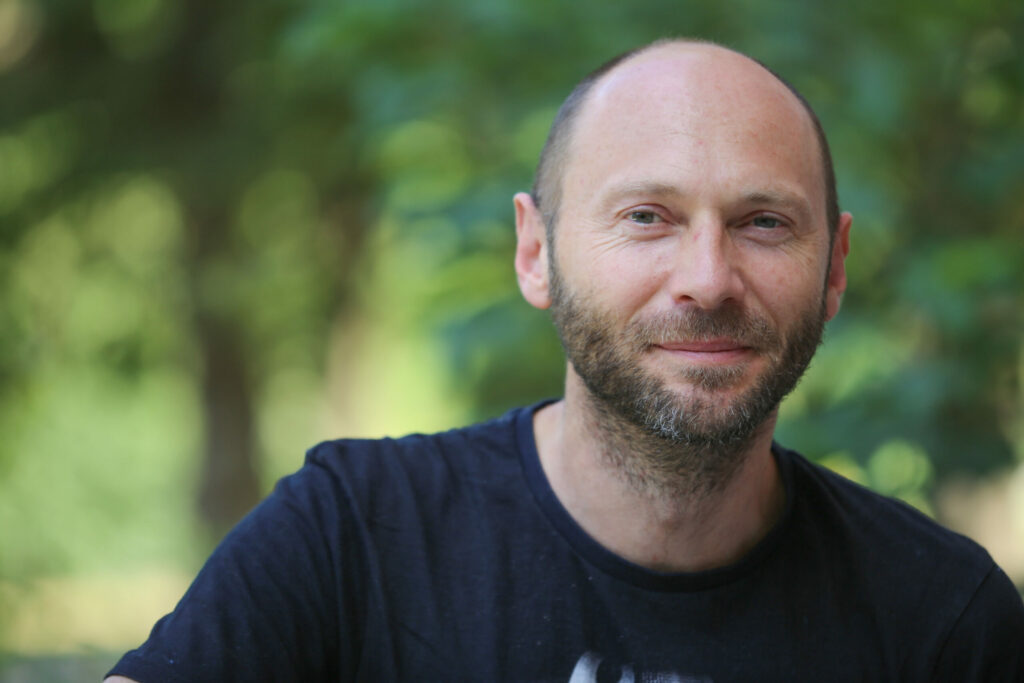The brainers

Jean-Sébastien Steyer – Paleontologist
Jean-Sébastien Steyer has a PhD in paleontology, is a researcher at the CNRS and is attached to the Muséum national d’Histoire naturelle in Paris. He is one of the few specialists studying life on Earth before the dinosaurs. He has also been working on the reconstruction of extinct species for almost twenty years. The author of numerous scientific articles, this enthusiastic popularizer regularly publishes works that are rapidly becoming benchmarks, such as La Terre avant les dinosaures (2009), Exquise planète (2014), and Demain, les animaux du futur (2015). Between paleontological expeditions to the four corners of the globe, he is also a science columnist for the magazines Pour la science and Espèces.
This brainer takes part in round-table discussions, offers improvisation sessions and the following solo talks:
Life before the dinosaurs
We often talk about dinosaurs, but what happened before that? Discover our planet 250 million years ago, a unique and vast land called Pangea. Explore its fantastic flora and fauna, from giant “salamanders” to large herbivorous and saber-toothed reptiles: a bestiary worthy of science fiction, yet very real and of crucial importance to our understanding of the evolution of species.
Comparative anatomy of imaginary species
Dragons, Spider-Man, Marsupilami ... From mythology to comics and superheroes, imaginary beings often borrow their characteristics from real species. But what are they? How does Totoro fly, lighter than air? And where does Chewbacca fit into the tree of life? Slip into the shoes of a naturalist to decipher these pop culture icons in the light of current knowledge. A scientific investigation combining biology, ecology and science fiction to stimulate your curiosity and sharpen your critical faculties.
Today, without us
We often imagine the state of the Earth after the disappearance of Man, buildings collapsed and cities obliterated... But what if humanity had never existed? What would the planet look like? What animal species would run across its surface? What plants would never have bloomed in the sun? What would the world's climate, seas and oceans be like? Who would have survived the ages and become extinct? An original forward-looking experience to help you think strategically.
Tomorrow's animals
The study of animals from the past provides us with information about the present and allows us to imagine the fauna of the future. How will the plants and animals around us evolve in the future? It's an invitation to reflect on the future of our planet and the role of mankind within biodiversity, by imagining the evolution of the Earth in 10 million years' time...
Planets of science fiction
Is the planet Hoth in Starwars completely frozen? Is the moon Pandora in Avatar home to truly tropical fauna? Is the planet Dune or Arrakis, home to giant sand worms, realistic? Explore the planets and ecosystems of science fiction in the light of our current knowledge of the Earth and life sciences.
Tolkien and science
The Lord of the Rings, Bilbo the Hobbit, J.R.R. Tolkien has imagined a vast, complex world. Detailed maps, multiple characters, a story within a story, this fantastic universe is so well constructed that it becomes an excellent excuse for doing science. Why do Hobbits have big hairy feet? Who are the Ents? What natural classification do Wargs fall into? Rediscover a major work in the light of current scientific knowledge.